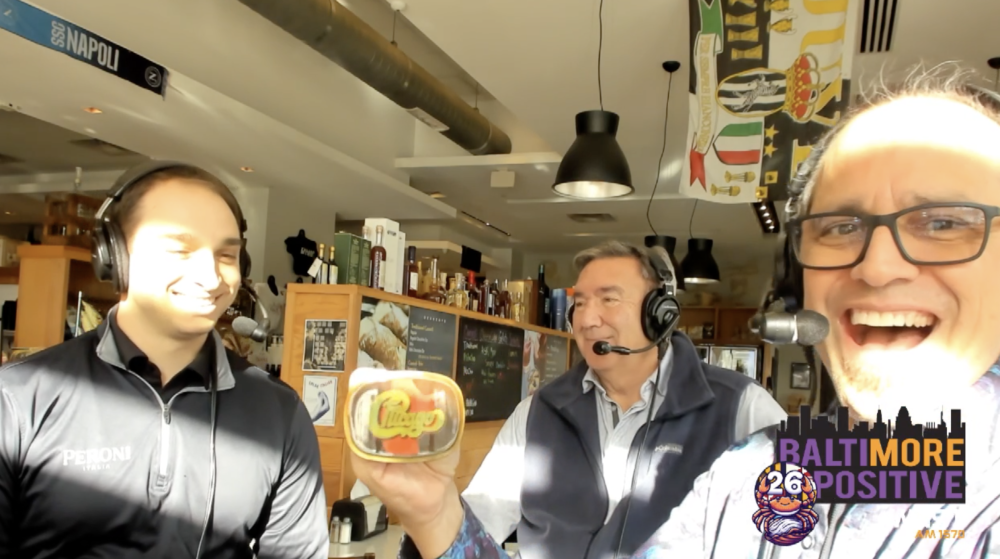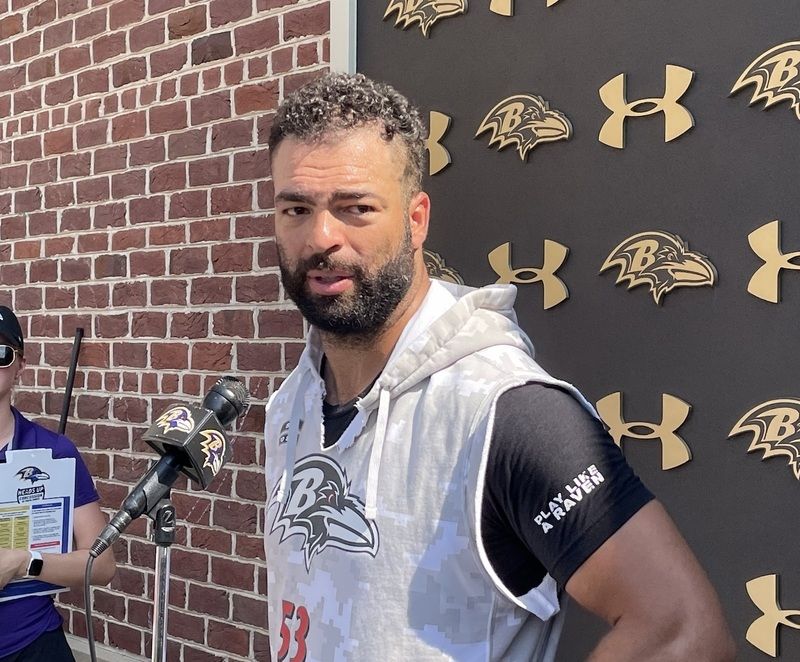The Ravens qualified for the postseason for the third straight year and registered their first playoff victory in six years, but where did their individual players stack up across the NFL in such an unusual 2020 campaign?
Whether it’s discussing the Pro Bowl or handing out postseason honors, media and fans spend much time discussing where players rank at any given position, but very few watch every player on every team closely enough to develop opinions as informed as we’d like to believe.
Truthfully, how many times did you watch the Detroit Lions linebackers this season? What about the Las Vegas Raiders offensive line? And the Seattle Seahawks cornerbacks?
That’s why I respect the efforts of Pro Football Focus while admitting their grades are hardly the gospel of player assessment. The exhaustive effort to evaluate players across the league shouldn’t be dismissed when most of us watch one team or maybe one division closely on any kind of a regular basis.
We’ll look at each positional group on the Baltimore roster in the coming days, but below is a look at where Ravens wide receivers stacked up across the NFL this past season followed by a positional outlook going into 2021:
Safeties
Tight ends
Defensive linemen
Running backs
Inside linebackers
Offensive linemen
Cornerbacks
Marquise Brown
2020 offensive snap count: 802
PFF ranking: 43rd out of 127 qualified wide receivers
2021 Week 1 age: 24
Skinny: Brown’s November struggles coincided with the team’s, but he rebounded to catch 37 passes for 534 yards and six touchdowns over the final eight games, which included his seven-catch, 109-yard output in the playoff win at Tennessee. The key is carrying that over for a full 16 games in 2021 as the Ravens try to take their passing game to the next level.
Miles Boykin
2020 offensive snap count: 545
PFF ranking: 100th out of 127 qualified wide receivers
2021 Week 1 age: 25
Skinny: His blocking remains an underrated strength for a run-first offense, but the Ravens didn’t draft Boykin in the third round to average one catch per game over his first two seasons. Whether it’s Boykin or someone else, Baltimore needs more production on the outside for this offense to evolve.
Willie Snead
2020 offensive snap count: 535
PFF ranking: 66th out of 127 qualified wide receivers
2021 Week 1 age: 28
Skinny: Taking into account the dramatic system change in the middle of 2018, this might have been Snead’s best season with the Ravens as he averaged 13.1 yards per catch and dramatically improved his yards after the catch per reception. However, recent tweets from the pending free agent suggest the veteran slot receiver may not be in Baltimore’s plans.
Devin Duvernay
2020 offensive snap count: 347
PFF ranking: 106th out of 127 qualified wide receivers
2021 Week 1 age: 24
Skinny: The rookie third-round pick had just four offensive touches for 31 yards after Week 12 as his playing time diminished down the stretch. His kick return ability showcased his impressive athleticism, so you’d expect Duvernay to have a bigger role in the offense for 2021.
Dez Bryant
2020 offensive snap count: 129
PFF ranking: n/a
2021 Week 1 age: 32
Skinny: Opportunity was there for the three-time Pro Bowl receiver to become a meaningful contributor in the offense, but Bryant was mostly a non-factor and caught only two passes over his final six games including the playoffs. Recent tweets have made it clear that the former Dallas Cowboy won’t be returning in 2021.
James Proche
2020 offensive snap count: 25
PFF ranking: n/a
2021 Week 1 age: 24
Skinny: One of the quirkier stats of the 2020 season was that two of Proche’s three targets resulted in interceptions returned for touchdowns, but assessing the rookie is virtually impossible on such a small sample size. The sixth-round pick from SMU has terrific hands, but his ability to separate remains a question as he tries to grow his role.
Chris Moore
2020 offensive snap count: 14
PFF ranking: n/a
2021 Week 1 age: 28
Skinny: Injuries limited the veteran to four games including the postseason, but his special-teams ability shouldn’t completely dismiss the chance of a return on a minimum-type deal. The arrival of Duvernay and Proche don’t help Moore’s chances, however.
2021 positional outlook
The organization may downplay the need for a legitimate No. 1 wide receiver and does have other needs on the offensive line, but expecting this passing game to grow meaningfully without an impactful addition to play on the outside is wishful thinking and probably wouldn’t be a great business decision in the midst of contract extension talks with star quarterback Lamar Jackson. Even if an elite receiver like Allen Robinson isn’t a realistic target in free agency, adding a veteran the caliber of a Marvin Jones should be the minimum expectation in addition to potentially drafting a receiver next month. The Ravens can certainly hope Brown finds more consistency in his third season and the other youngsters on the roster take a step forward under new wide receivers coach Tee Martin and pass game specialist Keith Williams, but the organization’s track record at the wide receiver position warrants skepticism.


























